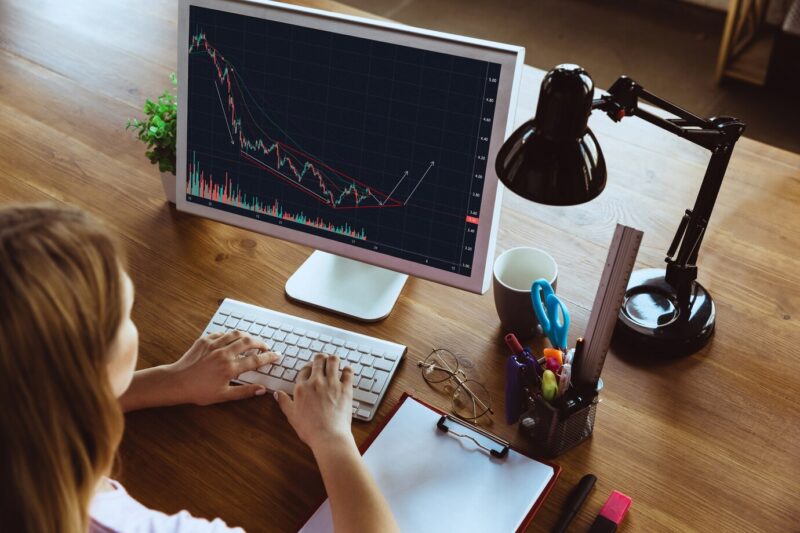Finding a platform for trading can feel like a walk through a jungle of choices, each one promising to be the ideal fit for any trader, no matter the experience level. But, let’s be real—choosing the right one can be like picking the perfect coffee blend: everyone has their own preferences, and one size doesn’t fit all.
Let’s sort through the options and break down some of the most popular ones out there, so anyone can choose the one that best fits their trading goals.
Key Points
- A variety of platforms for different trading needs and styles.
- Compare costs, features, and ease of use to pick your platform.
- Find a platform that supports multiple devices for accessibility.
- Assess platform reliability and security features.
- Evaluate the initial investment and transaction fees.
1. Assessing Your Options

Not every platform suits every trader. Each one has unique features, so knowing what you need upfront can save hassle. Here’s a quick look at four popular options: Binomo, MetaTrader, eToro, and Robinhood.
Binomo: This platform suits beginners or those wanting to start small, as it requires just $10 for a real account. With trades starting as low as $1, it keeps risks manageable for new traders. Binomo is open 24/7, even on weekends, and allows multiple open positions simultaneously—perfect for exploring strategies without heavy commitment.
MetaTrader: Known for advanced analysis tools and customization options, MetaTrader suits those who enjoy detailed data and are ready for a more technical setup. While it has a steeper learning curve, the platform’s depth and reliability appeal to experienced traders who want flexibility across a wide range of assets.
eToro: This one’s popular among traders interested in social trading, allowing users to copy strategies from more experienced traders. eToro has a range of assets, including crypto and forex, and works well for traders interested in both traditional and newer asset classes. It’s user-friendly yet robust, fitting both newcomers and experienced users.
Robinhood: Perfect for users wanting an easy, straightforward experience, Robinhood has zero-commission trades and a sleek design. The platform is mobile-optimized, making it accessible for casual investors on the go. Although more limited in assets, Robinhood appeals to those who want to trade without diving deep into complex data or extra fees.
2. Comparing Costs and Fees
Fees vary widely between platforms, and it’s not all about commissions. Some platforms charge inactivity fees, while others may have monthly maintenance costs. Here’s a quick breakdown of the types of fees to expect:
| Platform | Minimum Investment | Trading Fee Type | Withdrawal Fee | Inactivity Fee |
| Binomo | $10 | Commission-based | None | None |
| MetaTrader | $100 | Spread-based | Possible | Possible |
| eToro | $200 | Fixed or spread | Yes | Yes |
| Robinhood | None | Zero commission | Possible | None |
3. User Interface and Experience

The look and feel of a platform impact the whole experience. Some interfaces look like the cockpit of a spaceship (we’re looking at you, MetaTrader), while others keep it simple and easy to navigate. If simplicity is a priority, choose platforms with beginner-friendly layouts. Platforms like Robinhood appeal to users who want a sleek, uncluttered design, making it easier to jump straight into trades.
Others, like MetaTrader, offer an in-depth interface that suits users interested in serious analysis tools and technical indicators. For some, the steeper learning curve is worth it due to the added functionality and customizability.
4. Accessibility Across Devices
We all live on our phones, but there’s still a need for desktop functionality when it comes to trading. A solid platform should offer both, with apps optimized for mobile that match the desktop experience. Check if the platform offers an app that syncs with desktop and provides consistent updates and notifications. That way, even on a commute, a trader can keep an eye on their positions and market trends.
5. Reliability and Security
Choosing a trading platform means considering security, especially if real funds are involved. Two-factor authentication (2FA), encryption, and trusted servers are a must for safe trading. Platforms like eToro and Binomo ensure secure login options and have strong reputations for reliability. A reliable platform minimizes the chances of experiencing issues during volatile times—no one wants to be locked out of their account mid-trade.
6. Minimum Investment and Trade Amounts

Starting small is often a wise choice, especially if someone is just dipping their toes into trading. Platforms with lower minimums, like Binomo, make it easy for newcomers to start with a manageable amount. Binomo allows trades as low as $1, perfect for those still learning. In contrast, other platforms may have higher requirements, sometimes expecting a minimum account balance of $200 or more, which might be better for those who already have experience.
FAQ
1. What’s a “spread” fee?
A spread fee is the difference between the buying and selling price of an asset. Many platforms earn their commission this way.
2. Are platforms available worldwide?
Most are, but some countries restrict certain platforms due to regulations. Always check availability in your country before signing up.
3. Can I use these platforms on multiple devices?
Yes, many platforms support both mobile and desktop versions, though some work better on one device than the other.
4. Can I trade any asset on any platform?
No, each platform offers different assets, so check to see if your preferred asset type is supported before you sign up.


